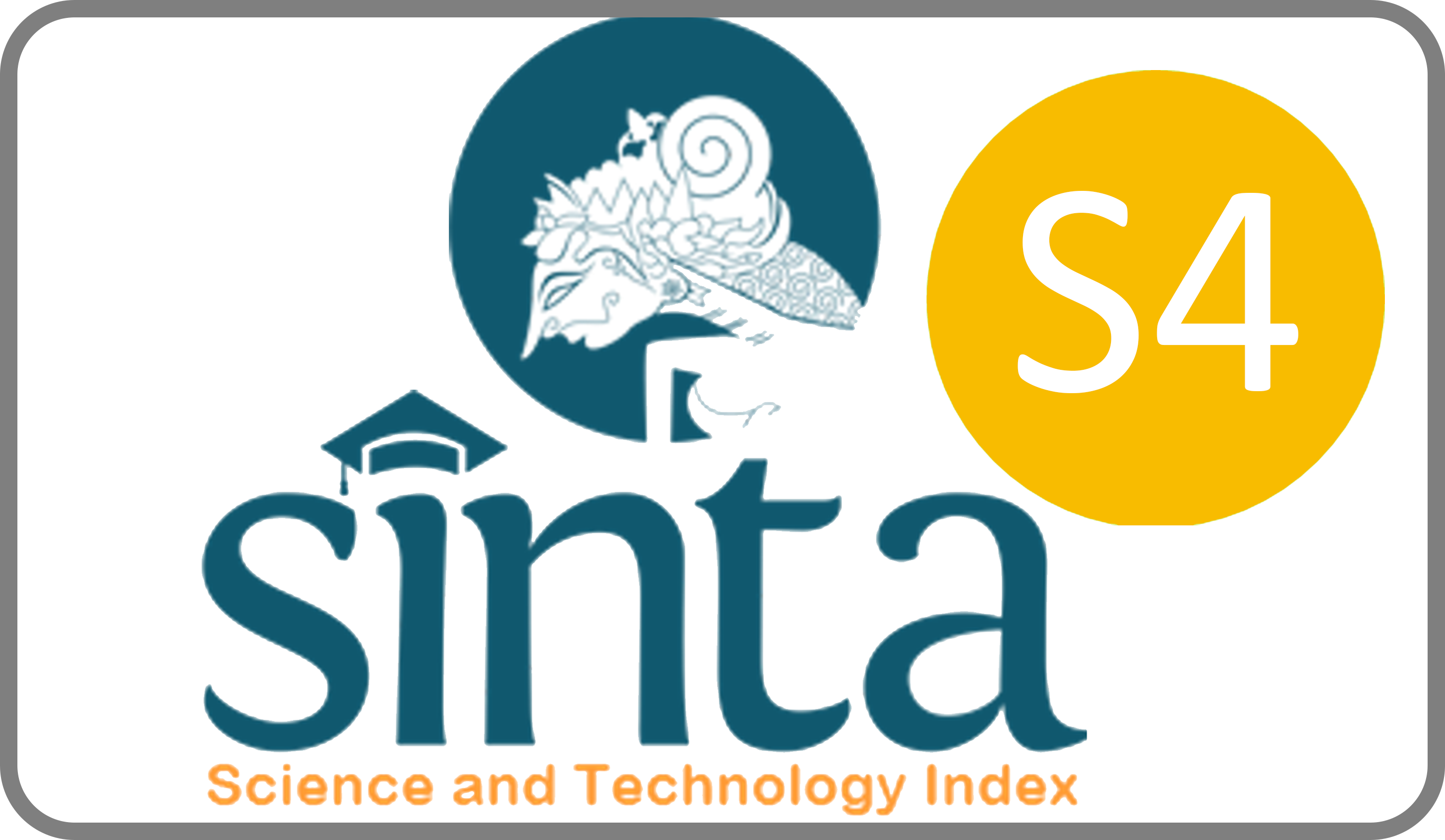KELANTING INNOVATION (GRAND MOTHER CLASS OF CARE STUNTING ) EDUCATION AND LOCAL FOOD DIVERSIFIED IN PREVENTING STUNTING SIDOBANDUNG, BALEN, BOJONEGORO REGENCY
Downloads
Nutrition problems are still a concern for the Indonesian government to be resolved immediately, one of which is the problem of stunting. , Bojonegoro Regency's stunting prevalence rate is 23.9 percent, making Bojonegoro the district with the 13th highest stunting prevalence of 38 districts and cities in East Java. The prevalence of stunting which is still quite high can affect Indonesia's development performance because stunting has an impact on children's health status so that children become vulnerable to illness and has an impact on children's intelligence and quality of life, so handling it is still a government priority. The innovation of the KELANTING program (Stunting Caring Grandmother Class) is present by involving academics who act as references for solving problems based on research results (based on research) in the field of midwifery and nursing. So that it is able to increase the understanding of the community, especially grandmother caregivers, so that they are able to carry out care appropriately and get used to it. children to consume foods with balanced contents. The Klanting Program is carried out with Local Food Education and Diversification in Sidobandung Village, Balen District, Bojonegoro Regency" as a pilot project for community-based stunting prevention efforts. This activity is carried out by involving 25 grandmothers who care for toddlers by carrying out outreach and education. After the Klanting activity was carried out, there was an increase in the understanding and knowledge of grandmother caregivers regarding parenting styles and food diversification to prevent stunting, namely 72% of grandmother caregivers after the clanting activity had good knowledge, compared to previously only 28%. This shows that there is an increase in the percentage of understanding and knowledge of grandmothers who care for toddlers about parenting patterns of grandmothers and local food diversification in order to increase toddlers' interest in eating food diversity and the use of local food which can prevent stunting in toddlers.
Apriliani, I.M. et al. (2021) ‘Open access Open access’, Citizen-Based Marine Debris Collection Training: Study case in Pangandaran, 2(1), pp. 56–61.
Jauhari, M.T. et al. (2023) ‘Description of Toddlers Diet Based on Mothers Education and Occupation’, 6(1), pp. 51–58.
Laily, L.A. and Indarjo, S. (2023) ‘Literature Review: Dampak Stunting terhadap Pertumbuhan dan Perkembangan Anak’, HIGEIA (Journal of Public Health Research and Development), 7(3), pp. 354–364. Available at: https://doi.org/10.15294/higeia.v7i3.63544.
Putri, E.M.I. and Azizah, N. (2017) ‘STUNTING OCCURENCE HANDLING EFFECTIVENESS IN REDUCING STUNTING PREVALENCE IN BOJONEGORO’, In PROCEEDING THE 4th INTERNATIONAL NURSING CONFERENCE “LIFE CYCLE APPROACH FOR SUCCESSFUL AGING”, pp. 88–92.
Rusmalina, S. (2019) ‘Pena medika’, Jurnal Kesehatan Pena Medika, 9(2), pp. 48–54.
Sary, Y.N.E. (2020) ‘PENDIDIKAN KESEHATAN KEPADA NENEK PENGASUH DALAM MENCEGAH STUNTING ANAK USIA 36 BULAN DI DAERAH PESISIR PANTAI’, Pratama Widya : Jurnal Pendidikan Anak Usia Dini, 5(2), pp. 89–94.
Copyright (c) 2024 NUR AZIZAH, Evita Muslima Isnanda Putri, Wiwik Muhidayati, puji lestari

This work is licensed under a Creative Commons Attribution-ShareAlike 4.0 International License.
JLM by Unair is licensed under a Creative Commons Attribution-ShareAlike 4.0 International License.
1. The journal allows the author to hold the copyright of the article without restrictions.
2. The journal allows the author(s) to retain publishing rights without restrictions
3. The legal formal aspect of journal publication accessibility refers to Creative Commons Attribution Share-Alike (CC BY-SA).
4. The Creative Commons Attribution Share-Alike (CC BY-SA) license allows re-distribution and re-use of a licensed work on the conditions that the creator is appropriately credited and that any derivative work is made available under "the same, similar or a compatible license”. Other than the conditions mentioned above, the editorial board is not responsible for copyright violation.


















